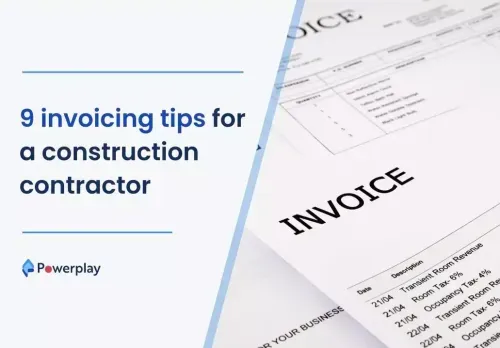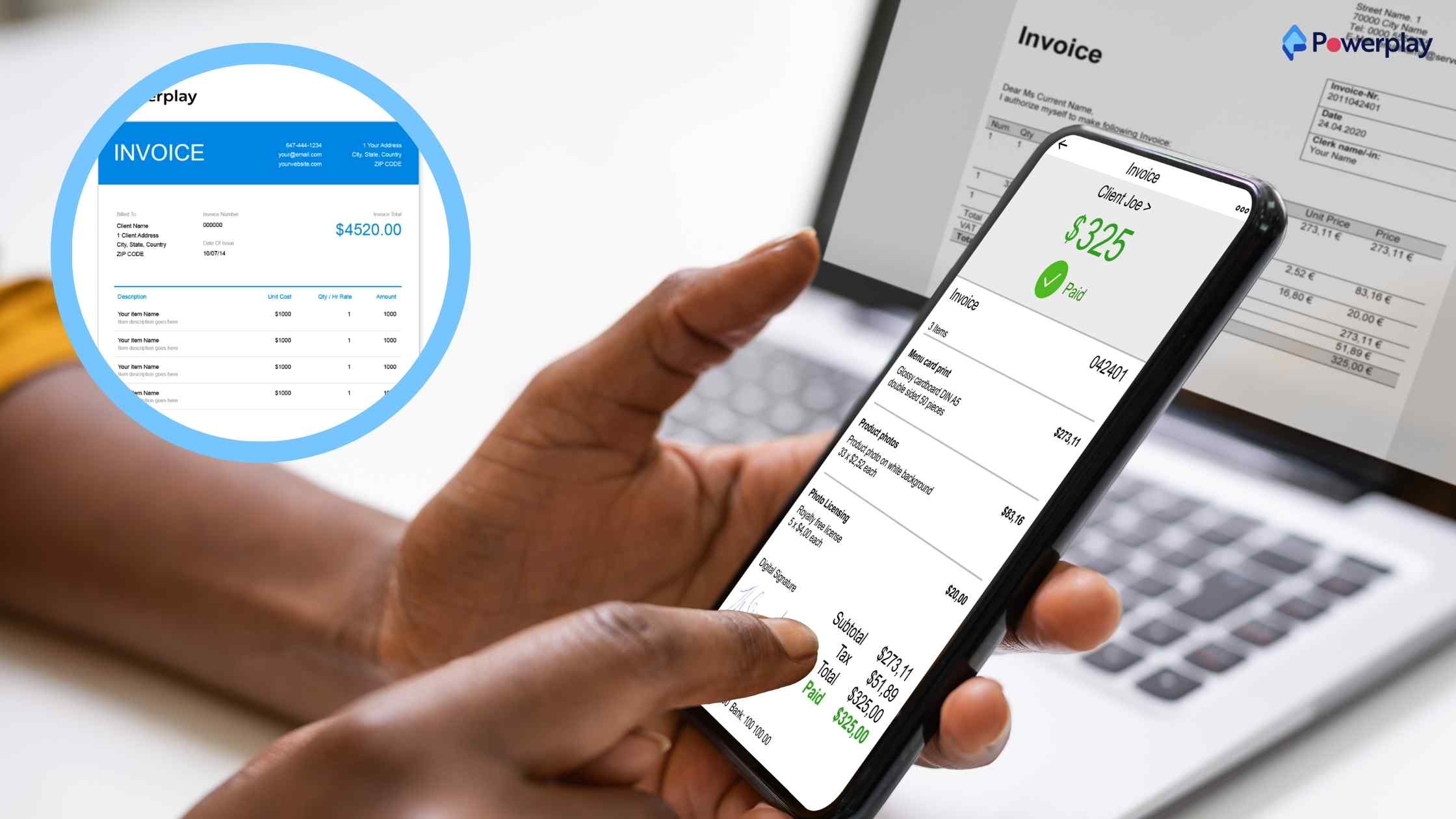9 Invoicing Tips for a Construction Contractor
-
Kumar Abhishek Anand
- October 12, 2023

The construction industry has been infamous for inconsistent payment methods and procedures that have severely affected it. Not only do small-scale contractors suffer losses frequently due to inefficient or ill-suited billing practices, but major contractors and even construction companies have taken several blows to their economy due to disorganized payment procedures such as allowing payments, expensive overheads, and reliance on credit.

Proper billing procedures and practices must be adopted to ensure accurate, fast, and transparent payments to tackle these efficiently and effectively so that the construction contractor or company can grow evenly.
Table of Contents
ToggleInvoicing Tips for a Construction Contractor
What are the various points contractors should consider when invoicing for the work they have completed?
To answer this question, the contractor can do invoicing suitably. Still, to successfully process these invoices that reflect the authenticity of the billed supplies, the contractor should prepare a transparent invoice that allows the client to check and review the expenses effortlessly. Below are some ways to carry out the billing process effectively:
01 – Label the document as an Invoice

Labelling of the invoice document is natural to identify the contents. Still, it is necessary to label the document as an invoice in the header to make it instantly visible to the client. Try to use the word ‘invoice’ in bold font and not overdo it.
02 – Inclusion of Business Information
The header where the document identifier is written must also include information about the business’ contact details. These contact details comprise the name of a contractor or firm, central office address, email address, and phone number, along with the company logo, if there is any.
Including the business’s contact details on the document may not seem important, but it is a great way of self-promotion since the company’s name is the most important aspect of any brand. It also signifies that after looking at the invoice document, the client can conclude that the client can reach out to the contractors or firms in case of any discrepancies or other follow-ups.
The business information identifies an invoice for the client and ensures that the clients know who to pay. Along with providing business information on an invoice document, the firm’s logo can also be included to give it a more professional look, allowing the invoice to stand out.
03 – Inclusion of Client’s Contact Details
The client’s contact information can also be included below the header to give it a more professional look. Adding the client’s information conveys that the contractor is well aware of the client’s businesses, is detail-oriented, and is willing to put in sincere and strong work.
Sometimes billing departments may act as daily business contact points in a large construction company. Still, the invoice may be submitted to some other departments as prescribed, which shows that the contractor is well aware of the client’s information.
04 – Unique Invoice Number

Adding unique invoice numbers to all the documents submitted by the contractor or company can help with record-keeping operations for both the client and the contractor. These unique invoice numbers help the people referring to a particular invoice and make it easier for reference purposes in case of future issues. The basic and easiest system for numbering invoices as per the project progress or timeline the project can be 1, 2, 3, 4, or a, b, c, d, etc.
05 – Invoice date
The date the invoice is submitted must be mentioned on the document.

06 – Service Details
The invoice document must include the itemized list of services or supplies organized in a tabular format. This can be typically done in a minimum of four columns in which the first column may be allotted for a concise description of the services or supplies. The second column must include the number of items or hours of service, the third column must be filled with the pay rate per quantity or time, and the last column can be filled with the total amount for each service or supply.
07 – Payment Terms

The contractor or the company must include the payment terms in the invoice document along with the methods through which payments are to be made. If they have a late fee policy, it should also be mentioned briefly in the document.
The respective account details in which the contractor will receive the invoiced payment must be mentioned clearly without any mistakes because an error in writing even one digit of the account number can prove to be a blunder.
Nowadays, payment terms and methods have been upgraded to digitized payment procedures such as UPI transfers, link transfers, etc. The payment terms and methods must be detailed so there is no hold-up in payment processing.
08 – List the Total Amount
The total amount plus the tax owing for the bill should be listed at the bottom of the invoice document. This part, depicting the total billed amount, should be highlighted in any way. You can use bold fonts, a different text color, or other formatting options to make it stand out.
09 – Payment Deadline
The deadline for payment must be highlighted and printed in bold. Additionally, it should be presented in an easy-to-read font so that there is no problem for anyone reading that section. The due date that the contractor includes in the invoice document must be as precise as possible. This includes specifying the time and day along with the deadline date. This clarity ensures there is no confusion of any kind that can lead to subsequent delays.
In the case of cheques, drafts, or other payment types, they can take more time to be processed. Therefore, they must be submitted on a date that allows processing before the deadline.
The Indian construction industry is growing rapidly. However, there is a clear need for a robust construction project management system. This system would oversee and regulate the processes in a proper and organized manner.
Mobile-based applications are beneficial, given their ease of access from any remote location. Track, monitor, and manage your construction projects with Powerplay, a one-stop Cloud-based solution for all your construction management needs. Our customers are saving up to 7% on their overall project cost.
So, what are you waiting for? Power Up Your Construction with Powerplay today!!
Request a Demo to learn more.
Share
Kumar is a digital content professional with more than 2 years of experience in Blog writing, copywriting and scripting. His passion lies in the art of creating convincing content that plays a major role in converting leads for SAAS businesses.












